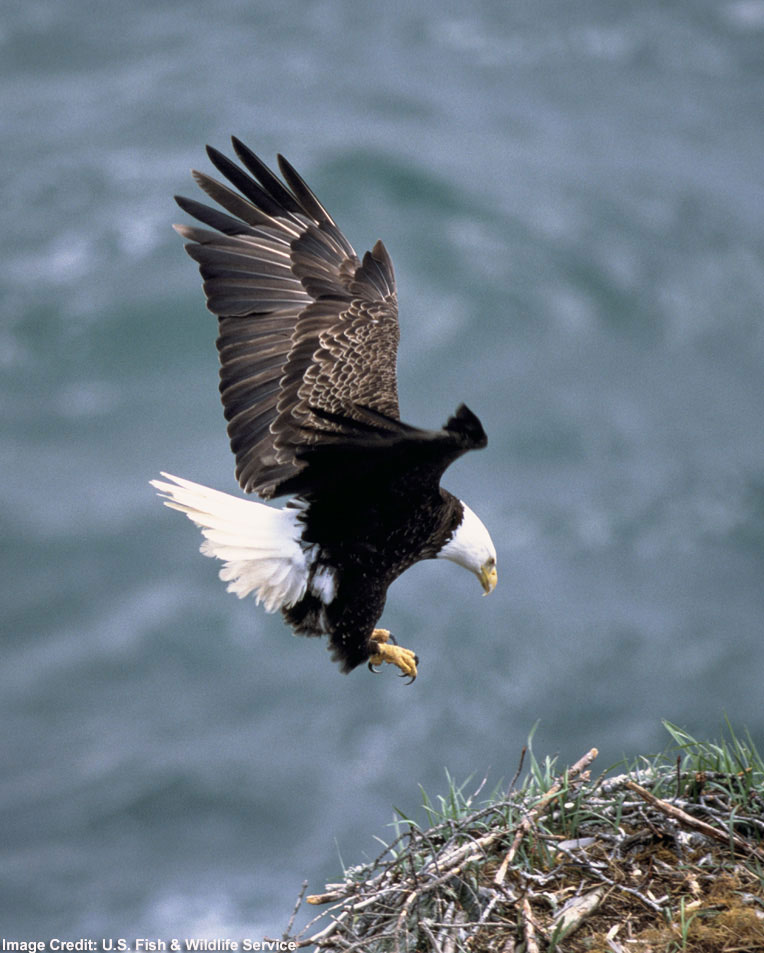Eagle Chicks Allegedly Kill Sibling on Web Cam

-----
Range: Worldwide.
Characteristics: Large, hooked beak, strong legs and powerful talons. They resemble vultures but have fully feathered heads and hunt live prey.
One of the hottest web cams on the internet has gained tremendous popularity thanks in part to the soap opera antics of its unlikely stars—two nesting bald eagles and their eaglet children.
The short nesting season has already been rife with drama for the family. Although three chicks hatched, regular viewers noticed one day that a chick was missing and never returned.
Scientists with the National Wildlife Federation (NWF) and the Biodiversity Research Institute in Maine, which run the web cam, suspect foul play.
It is not uncommon for bald eagle chicks to peck their weakest sibling to death in a gruesome display of "survival of the fittest." U. S. Fish and Wildlife Service officials have not said conclusively what happened, but all signs point to murder. Based on their notes, the likely suspect is the biggest and most aggressive of the eaglets, although there are no plans at this time to press charges.
Daily show
The "eagle cam" provides the public with a daily look into the lives of a nesting bald eagle pair that have raised more than a dozen chicks in the last decade. The live show has been so popular that the NWF and other conservation websites that broadcast the action have reached their web traffic limits and have asked viewers to limit their time on the sites. [Click here to check it out.]
Among the highlights to watch for: The larger eaglet has been exercising its flapping muscles and could make its first solo flight any day now. Also, take note of the birds' polite potty habits.
Sign up for the Live Science daily newsletter now
Get the world’s most fascinating discoveries delivered straight to your inbox.
"After feedings, watch for the young eaglets to back up to the edge of the nest to defecate," writes U.S. Fish and Wildlife Service eagle cam specialist Mark McCullough. "This is the eagles' way of keeping a clean nest."
The eagle cam serves as a good reminder of how well the bird's numbers have rebounded in the last 40 years, from 417 nesting pairs in 1963 to more than 7,000 today in the lower 48 states. While the bald eagle's success story has many officials suggesting delisting it as an endangered species, the bird still faces major threats, such as mercury pollution and habitat destruction.
A day in the life
The nest is located in a pine tree near the ocean in Maine and is six feet across and about 30 feet off the ground. Unlike many birds, both bald eagle sexes look the same, although females are slightly larger, allowing viewers to tell mom from dad.
Bald eagles typically lay two or three eggs in March, with the chicks hatching sometime in April after a 35-day incubation period. For the next few months, the parents will bring lots of food to the fast-growing chicks, and web cam viewers will see a smorgasbord of food options in the nest, although the most frequent menu item is fish.
The eaglets are slow to leave home, gradually working their way out on nearby branches only after they reach 12 weeks in age. While they will test their wings and fly from the nest, they will remain in the area for many months, depending on their parents for food until they learn to forage on their own.
When they eventually leave the nest, young eagles stay on their own until they start looking for a mate when they turn five. They might return to their old nest to visit their parents, but scientists can't say for sure how often this happens because it is difficult to identify individual birds.
Following the rampant popularity of the eagle cam, researchers in Maine set up a loon cam. Although the loon cam has so far lacked the soap opera theatrics of the eagle cam, it provides fresh images of fuzzy loon chicks and even has links to adopt your own loon.









